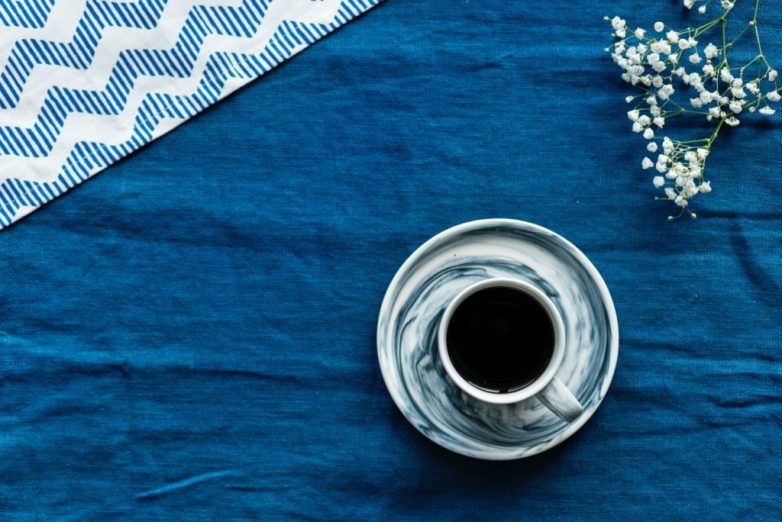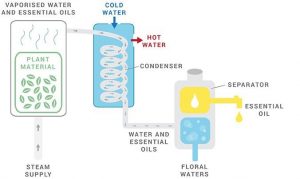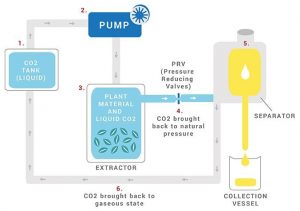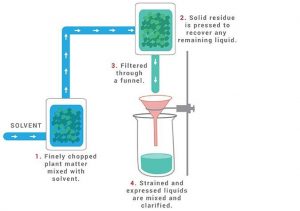
HOW DOES ESSENTIAL OIL AFFECT EMOTIONS WITH THE SCENT?
When you inhale aroma, its scent molecules—the VOCs discussed earlier—enter your nose, where they remain in a part of the nasal lining (the olfactory membrane). Within this lining is the olfactory epithelium, a specialized tissue containing receptor neurons (nerve cells) that become containers for the scent molecules.
These neurons don’t just trap the scent molecules and hold them inside the nose. but also send electrical impulses to the brain’s olfactory bulb, the center of the sense of smell. The olfactory bulb then signals the amygdala, an area of the brain that contains emotional memories. The olfactory bulb also distributes signals to the sense of taste, housed in the gustatory center, and this signaling is what makes aromas a key factor in how food tastes.

Olfaction—the sense of smell—is the only one of the five senses that is directly connected to the limbic system, the part of the brain that controls blood pressure, heart rate, and breathing as well as memory and hormone balance. The limbic system regulates fear, anger, depression, anxiety, happiness, and sadness, and it is believed that a scent entering the olfactory bulb has the ability to affect all these emotional responses.
Therefore, if you want to soothe your emotions through essential oils, the best stick method is to use it with diffuser, Homasy will be your best choice.
HOW ESSENTIAL OILS ARE PRODUCED?
Extracting essential oils from plants is not something that can be done easily as a DIY project. Some methods of extracting essential oils have been around for thousands of years while others are still being proven. Essential oils are extracted using one of several basic methods. The two most common are steam distillation and CO2 extraction. In fact, we mentioned some methods of extracting essential oils at the beginning of the article. There are many different ways to extract essential oils and they are listed below:
STEAM DISTILLATION
CO2 EXTRACTION
ENFLEURAGE
EXPRESSION
MACERATION
SOLVENT EXTRACTION
WATER DISTILLATION
STEAM DISTILLATION is the most common method for extracting essential oils. Vast quantities of aromatic plants are loaded into a machine and tightly compacted. Steam is then forced through the plant “filter”, heating it up and releasing the oils as a gas. As the gas cools, it liquefies into oil and water, which is then separated. The fragrant water that’s left behind by this process is a hydrosol and is valued in its own right.
 ]
]
CO2 EXTRACTION is a process similar to steam distillation, but it uses carbon dioxide instead of water to extract the essential oil from the raw plant material. In this method, carbon dioxide is chilled to between 35 and 55 degrees Fahrenheit before being blasted through the plant material. What results is a pure essential oil that has not been even slightly altered by exposure to heat.

ENFLEURAGE is not commonly used today, but it is one of the oldest methods of essential oil extraction that implements the use of fat. By the end of this process, either vegetable fat or animal fat becomes infused with the flower’s fragrance compounds. The fats that are used are odorless and solid at room temperature. The enfleurage process can be done either “hot” or “cold”. In both instances, the fat that is saturated with fragrance is called “enfleurage pomade”.
EXPRESSION (aka “cold pressing”) is used mostly for extracting the essential oil from the peels of citrus fruit. In this method the fruit peels are pressed and then the oil is separated from the juice and pulp in a centrifuge. Expression is also the process used in winemaking and creating olive oil.
MACERATION sounds like a process that would involve grinding or chewing-up herbs, but it isn’t. Plants are soaked in hot oil, which breaks down their cell walls to release the essential oils. The result is then filtered and bottled. The Egyptians used this method extensively in their perfume making.

SOLVENT EXTRACTION is used when flowers have too little volatile oil for other extraction methods. The essential oils are extracted with the help of chemical solvents such as methylene chloride, hexane, or benzene, and are called “absolutes”. Solvent extraction is an expensive, labor-intensive process that often involves several solvent treatments. Purists do not consider absolutes to be true essential oils due to the solvent that is left behind.
The end result of these processes is a bottle of essential oil that can be used alone or in combination as part of a DIY medicine chest, cosmetic case, and home-care cabinet.
In order to create a safe and effective collection of essential oils, choose the purest and best essential oils. Price isn’t always a determiner of quality. Research the various essential oil manufacturers to determine the processes they use to create the essential oils, as well as the purity of their oils, before purchasing the essential oils you want to include in your personal aroma-therapy kit.
WATER DISTILLATION means delicate flowers such as roses and orange blossoms would clump together when introduced to steam in the distillation process, so the most effective method of extraction in this situation is to submerge fragile plant material in pure boiling water instead. The water protects the extracted oil from overheating. The condensed liquids cool down and separate from each other. The remaining water, which can sometimes be fragrant, is referred to by several names including hydrolate, hydrosol, herbal water, essential water, floral water, or herbal distillate.